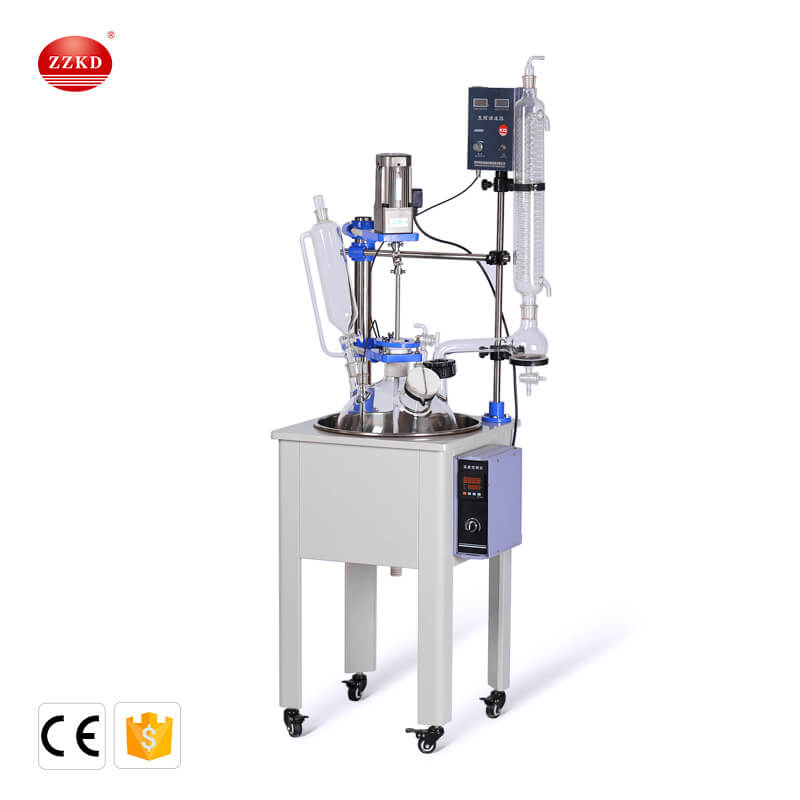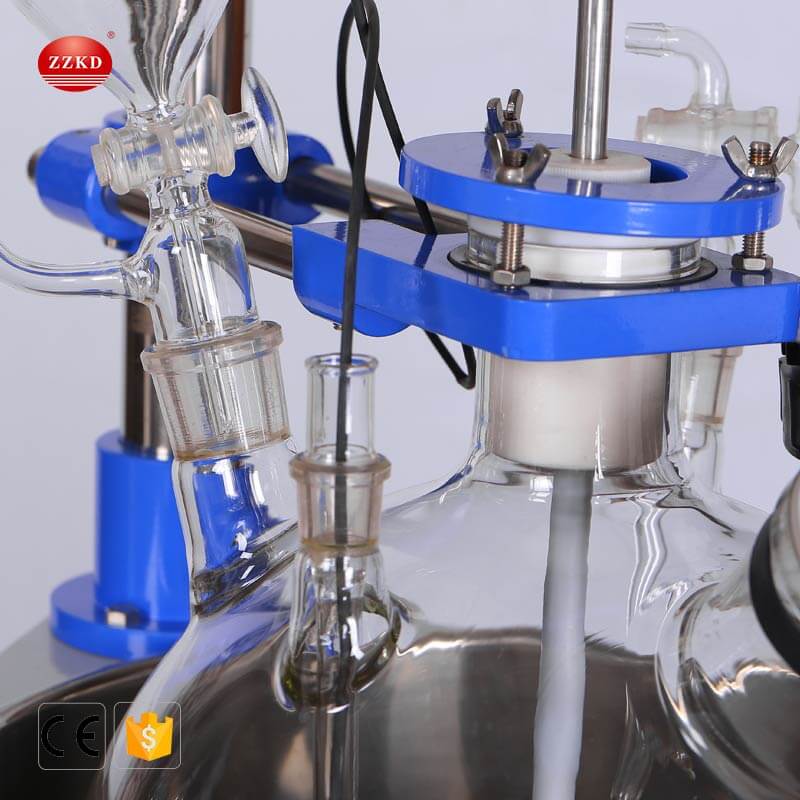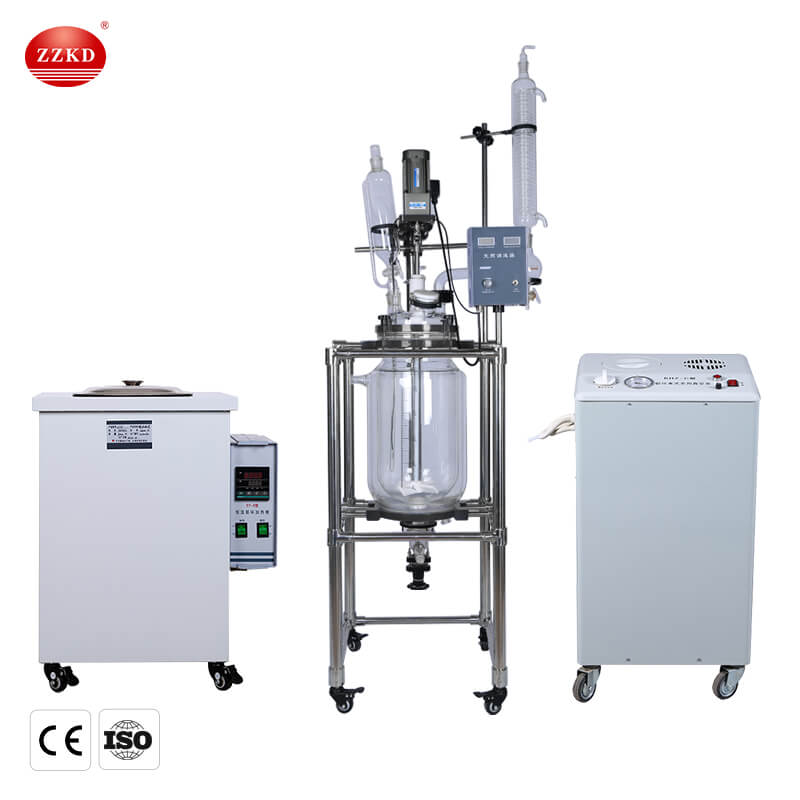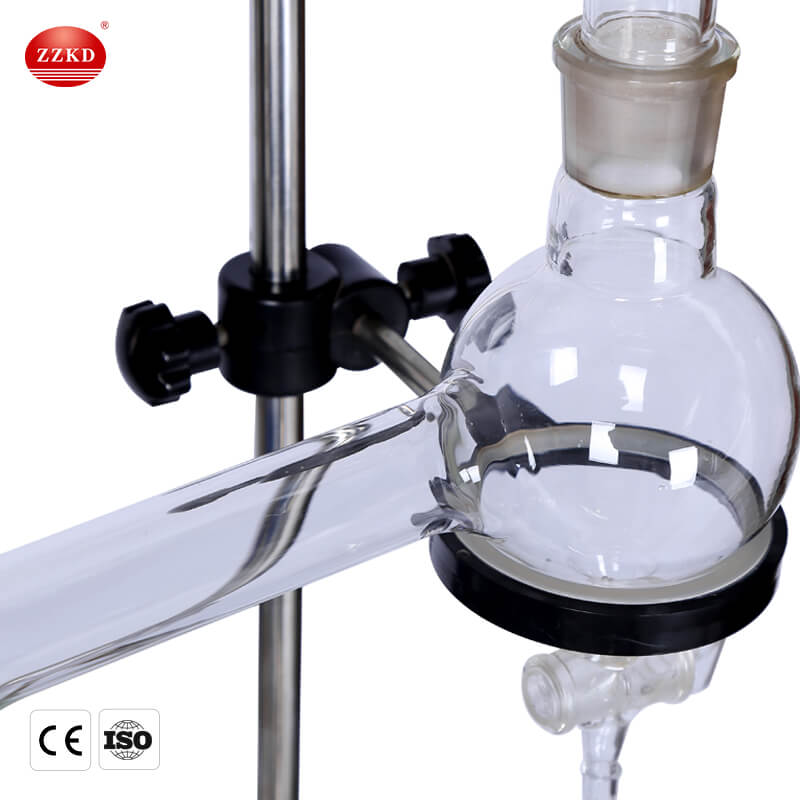Glass Reactor, Pilot Plant Reactor , Jacketed Reactor
With reference to the latest technology, our company has designed and manufactured a 1-50L double-layer glass reactor, and its matching heating-cooling-refrigeration cycle device. It has independent intellectual property rights, and users are welcome to choose 100l glass reactor.
Jacketed Glass Reactor Superior High Quality
The working principle of the double-layer glass reaction kettle is: through the interlayer of the double-layer reaction kettle, a constant temperature (high temperature or low temperature) heating or cooling liquid is injected to heat or cool the materials in the reaction kettle at a constant temperature. The material is reacted in the reaction kettle, and the evaporation and reflux of the reaction solution can be controlled. After the reaction is completed, the material can be discharged from the discharge port at the bottom of the kettle, and the operation is extremely convenient. It is an ideal equipment for modern chemical sample experiments, biopharmaceuticals and new material synthesis
▲ Frequency conversion speed regulation 10-50L, electronic speed regulation 1-5L, AC induction motor. Constant speed, no brushes, no sparks, safe and stable, and can work continuously.
▲ The whole set of glass instruments is produced by G3.3 borosilicate glass, which has good chemical and physical properties.
▲ The glass interlayer interface is connected with hot oil and circulated, which can do heating reaction, and cooling liquid can be used for low-temperature reaction.
▲ It can react at room temperature, and the heat of the reaction can be quickly taken away by running tap water.
▲ The lower discharge port has a flange port and a PTFE valve, there is no dead angle in the container, and it can be disassembled to facilitate the discharge of solid materials.
▲ Four-port reactor cover, extra-large port design is easy to clean, standard port socket can choose to assemble reflux, distillation synthesis device

Jacketed Glass Reactor, Jacketed Glass Reactor Manufacturers, Suppliers, Value
The structure principle and characteristics of the single-layer glass reactor: the reactor is composed of the pot body, the pot cover, the stirrer, the jacket, the support and transmission device, the shaft seal device, etc. The material and opening can be made according to the user's process requirements. Heating forms include electric heating, oil heating, gas heating, water heating (or cooling), and open flame heating. The jacket type is divided into: jacket type and outer half-pipe type, and the jacket oil heating type is equipped with a diversion device. The stirring forms generally include paddle type, anchor type, frame type, ribbon type, wall scraping type, etc. High-speed types include dispersed impeller type, turbine type, high shear type and propeller type, for customers to choose according to the process. The transmission forms include ordinary motors, explosion-proof motors, electromagnetic speed-regulating motors, frequency converters, etc. The heat exchangers include cycloidal pinwheel type, worm gear type, and planetary stepless speed change type. Shaft seals are ordinary water cooling packing seals, combined tetrafluoro packing seals and mechanical seals. The discharge forms include ball valve and downward expansion valve,1l jacketed reactor.
Application structure of single-layer glass reactor:
Single-layer glass reactors are available in a wide variety, featuring advanced technology, stable quality, smooth transmission, and convenient operation. It is widely used in petroleum, chemical, food, medicine, pesticide, scientific research and other industries. It is a reaction equipment used to complete chemical processes such as polymerization, condensation, vulcanization, alkylation, hydrogenation, and many processes of organic dyes and intermediates. The three reactors (kettles) have various specifications, the pressure is 10MPa, the volume is 0.1~10M3, and the heating methods include jacket or coil steam heating, electric heating, oil heating, etc. According to the material production requirements and user needs, the pressure, temperature, material, stirring device type, speed, sealing structure, heating method, etc. are determined for design and manufacture.

Double Layer Jacketed Glass Reactor
The double-layer glass reactor is designed with double-layer glass. The inner layer is put into the reaction solvent, which can be used for stirring reaction. Under the set constant temperature, in the sealed glass reactor, the stirring reaction can be carried out under normal pressure or negative pressure according to the requirements of use, and the reaction solution can be refluxed, distilled and separated. It is a modern fine chemical, biopharmaceutical and Ideal pilot and production equipment for the synthesis of new materials. The glass reactor is made of GG17 high borosilicate glass, which has good physical and chemical properties.

Features of double-layer glass reactor:
▲ Frequency conversion speed regulation (10-100L), electronic speed regulation (1-5L), AC induction motor. Constant speed, no brushes, no sparks, safe and stable, and can work continuously.
▲ The whole set of glass instruments is produced with GG17 high borosilicate glass, which has good chemical and physical properties.
▲ The glass interlayer interface is connected with hot oil and circulated, which can do heating reaction, and cooling liquid can be used for low-temperature reaction.
▲ It can be reacted at room temperature, and the heat of reaction can be quickly taken away by running tap water.
▲ The lower discharge port has a flange port and a PTFE valve, there is no dead angle in the container, and it can be disassembled to facilitate the discharge of solid materials.
▲ The five-port reactor cover, the extra-large port design is easy to clean, and the standard port socket can be used to assemble reflux, distillation, separation, and synthesis devices.
▲ The overall stainless steel column mobile frame structure is easy to operate and has good stability.
Functions Of Jacketed Glass Reactor
We can inject hot oil into the interlayer of the double-layer glass reactor, which can do high temperature and constant temperature reaction. If we only need a temperature below 100 degrees, we don’t need to worry about anything. As long as we add water to the constant temperature oil bath to heat up, pour it in. Everything is OK! But I want to raise the temperature to above 200 degrees. First of all, we have to consider whether the reactor can withstand such a high temperature. If not, the glass will burst and be dangerous. If we say that the glass reactor we bought is subjected to such high temperature, then we have to think carefully about what to use as the heat source, this is very important.

If the heat medium is not used correctly, it will be difficult for us to achieve the goal. Not only that, as the temperature increases, perhaps the hot oil in the oil pan will reach its flash point and cause a fire. I have done such an experiment. I went to the market to buy heat transfer oil, but because the model was wrong and the viscosity was too high, the medium could not be injected into the double-layer glass reaction kettle. When I got up, it killed me. Finally, I bought dimethicone oil with a kinematic viscosity of 100, and then I completed the experiment. This oil will not smoke when heated to 280 degrees, non-toxic, and no unpleasant smell. odor. And the heat preservation effect is very good, suitable for constant temperature and high temperature reaction.


